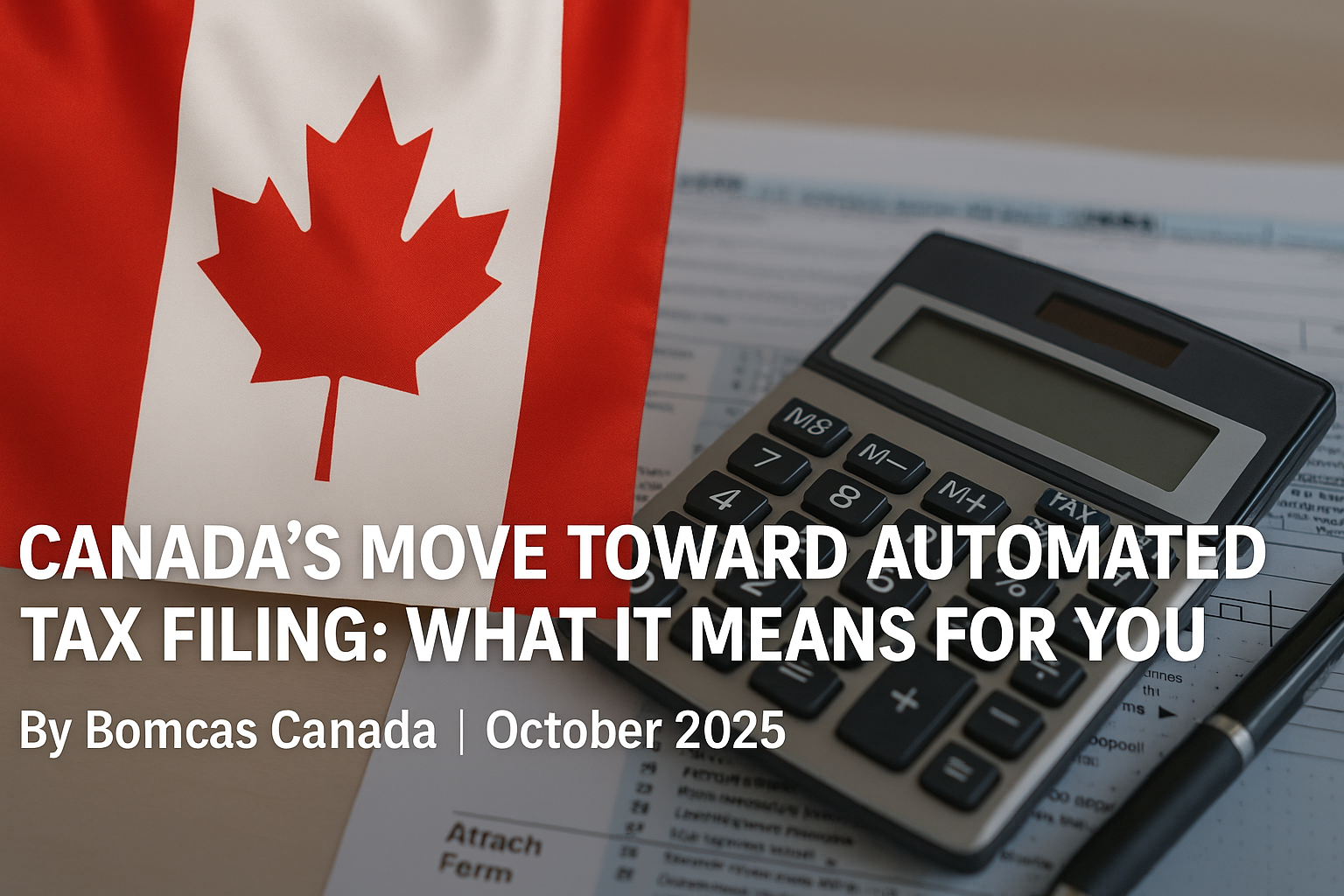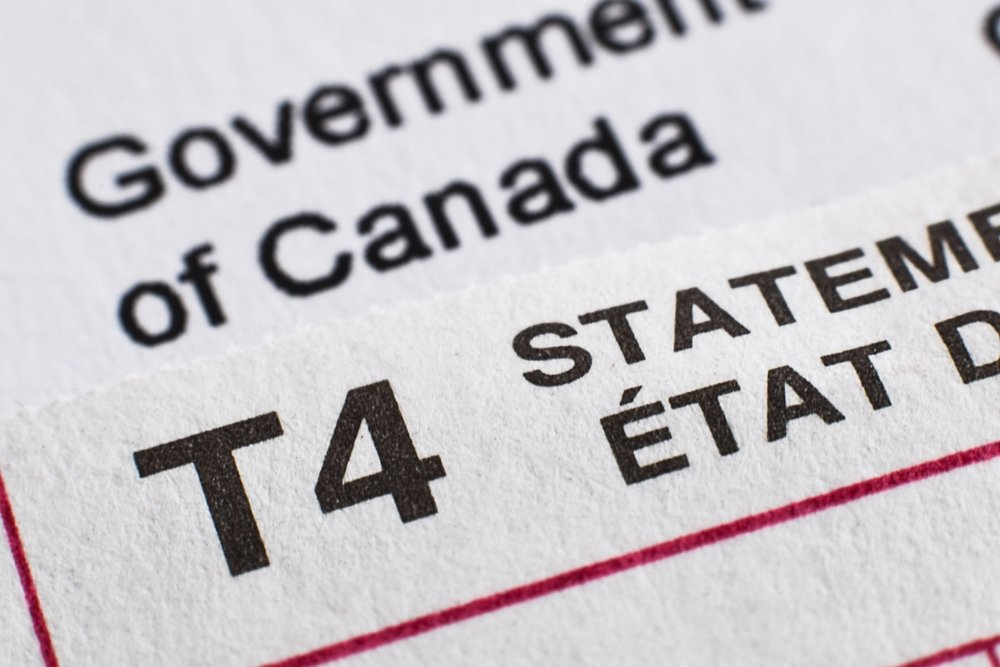We understand the challenges small business owners face when navigating the complex world of taxation. In Saskatchewan, the small business tax rate plays a crucial role in shaping the financial landscape for entrepreneurs. As tax professionals, we’re here to shed light on this important aspect of running a business in our province, helping you make informed decisions and optimize your tax strategy.
In this article, we’ll explore the ins and outs of the small business tax rate in Saskatchewan. We’ll cover the current rate, eligibility criteria, and how to calculate your small business tax. Additionally, we’ll discuss the benefits of this tax rate, potential future changes, and how it compares to other provinces and the federal corporate tax rate. By the end, you’ll have a clear understanding of how this tax structure affects your business and how to make the most of it.

Overview of Small Business Taxation in Saskatchewan
In Saskatchewan, we have a unique taxation landscape that significantly impacts small businesses. Our province has a strong entrepreneurial spirit, and small businesses play a vital role in our economy. Let’s delve into the specifics of small business taxation in Saskatchewan and explore its importance.
Definition of a small business
In Saskatchewan, we define small businesses as enterprises with fewer than 50 employees. This classification is crucial for understanding the tax implications and benefits available to these businesses. As tax professionals, we often work with clients who fall into this category, helping them navigate the complexities of the small business tax rate in Saskatchewan.
The small business tax rate applies to Canadian-controlled private corporations claiming the small business deduction. Currently, the net tax rate for these businesses is 9%. This lower rate is applicable to income eligible for the federal small business deduction, with one key component being the business limit.
In Saskatchewan, we have set the small business income threshold at CAD 832,800.10, which is the highest in Canada. This means that eligible businesses can benefit from the reduced tax rate on a larger portion of their income compared to other provinces.
Importance of small businesses in Saskatchewan’s economy
Small businesses have a tremendous impact on Saskatchewan’s economy. They account for an impressive 98.8% of all business enterprises in our province, totaling nearly 149,000 businesses. This statistic alone highlights the significance of small businesses in shaping our economic landscape.
The growth of small businesses in Saskatchewan has been remarkable. From 2012 to 2022, we saw a 44.6% increase in the number of small businesses, growing from 101,771 to 147,116. This growth demonstrates the resilience and entrepreneurial spirit of our province.
Small businesses contribute significantly to our province’s Gross Domestic Product (GDP). In recent years, they have accounted for nearly a quarter of Saskatchewan’s GDP, showcasing their substantial economic impact.
Employment is another area where small businesses make a significant contribution. In 2022, they employed 30.6% of Saskatchewan’s workforce, providing vital job opportunities across various sectors. These businesses paid out nearly CAD 9.99 billion in wages and salaries, representing 24.9% of the province’s total payroll.
The importance of small businesses to our economy has not gone unnoticed by the government. In recognition of their role as the backbone of our provincial economy, the Government of Saskatchewan has introduced legislation to provide relief to small businesses. The Income Tax Amendment Act, 2024 maintains the small business tax rate reduction at one percent until June 30, 2025. This extension is expected to benefit an estimated 31,000 small businesses in Saskatchewan, saving them CAD 77.73 million in corporate income tax.
Current Small Business Tax Rate in Saskatchewan
We’re pleased to inform you that Saskatchewan currently has one of the most competitive small business tax rates in Canada. As of now, the small business tax rate in our province stands at 1%. This rate applies to the first CAD 832,800.10 of eligible business income earned by Canadian-controlled private corporations. It’s worth noting that this threshold is the highest in Canada, providing a significant advantage to small businesses operating in Saskatchewan.
The current rate is a result of recent changes implemented by the Government of Saskatchewan to support small businesses, especially in light of the challenges posed by the pandemic and subsequent economic recovery. Let’s delve deeper into these changes and how they compare to other provinces.
Recent changes to the rate
In the fall of 2020, we saw a temporary reduction in the small business tax rate as part of the government’s efforts to provide relief to small businesses during the pandemic. Initially, this reduction was set to gradually return to 2% by July 1, 2024. However, the 2024-25 Budget brought good news for small business owners.
The Income Tax Amendment Act, 2024 maintains the small business tax rate reduction at 1% until June 30, 2025. This extension is expected to benefit an estimated 31,000 small businesses in Saskatchewan, resulting in savings of approximately CAD 77.73 million in corporate income tax. Since the rate was first lowered in 2020, it’s projected to save Saskatchewan’s small businesses an estimated CAD 577.41 million in total.
Comparison with other provinces
When we compare Saskatchewan’s small business tax rate to other provinces, we find that our province offers one of the most favorable tax environments for small businesses in Canada. Currently, Saskatchewan boasts the second-lowest small business tax rate in the country.
To put this into perspective, let’s look at some recent changes in other provinces:
- Ontario decreased its small business income tax rate to 3.2% from 3.5%, effective January 1, 2020.
- Quebec reduced its small business income tax rates to 5% from 6%, effective January 1, 2020, with a further decrease to 4% planned for January 1, 2021.
- Nova Scotia decreased its small business income tax rate to 2.5% from 3%, effective April 1, 2020.
- Prince Edward Island reduced its small business income tax rate to 3% from 3.5%, effective January 1, 2020, with a proposal to further reduce it to 2% from January 1, 2021.
- Yukon announced plans to decrease its small business income tax rate to 0% from 2%, effective January 1, 2021.
While some provinces have made reductions, Saskatchewan’s rate remains highly competitive. Moreover, our province’s high small business income threshold of CAD 832,800.10 sets us apart, allowing businesses to benefit from the reduced rate on a larger portion of their income compared to other provinces.
It’s important to note that the combined federal and provincial tax rate for small businesses in Saskatchewan is 10% (9% federal + 1% provincial) for income up to CAD 694,000.08, and 17% (15% federal + 2% provincial) for income between CAD 694,000.08 and CAD 832,800.10. This structure further enhances the tax advantages for small businesses operating in our province.
Eligibility Criteria for Small Business Tax Rate
We understand that navigating the eligibility criteria for the small business tax rate in Saskatchewan can be complex. As tax professionals, we’re here to break down the key requirements and help you determine if your business qualifies for this beneficial rate.
To be eligible for the small business tax rate in Saskatchewan, which currently stands at 1% until June 30, 2025, your business must meet specific criteria related to revenue thresholds and business structure. Let’s explore these requirements in detail.
Revenue thresholds
The amount of eligible business income on which the small business tax rate applies in Saskatchewan is CAD 832,800.10. This threshold is the highest in Canada, giving Saskatchewan businesses a significant advantage. Here’s what you need to know about revenue thresholds:
- The 1% tax rate applies to the first CAD 832,800.10 of eligible business income.
- Income exceeding this threshold is taxed at the general corporate rate.
- This high threshold allows businesses to benefit from the reduced rate on a larger portion of their income compared to other provinces.
It’s important to note that this threshold remains unchanged, even as the small business tax rate is set to increase to 2% on July 1, 2025.
Business structure requirements
To qualify for the small business tax rate in Saskatchewan, your business must meet certain structural requirements. Here are the key points to consider:
- Canadian-controlled private corporation (CCPC): Your business must be a CCCP to be eligible for the small business tax rate.
- Active business income: The reduced rate applies to active business income, which includes money earned from a profession, trade, manufacture, or any undertaking carried on for profit.
- Small business deduction: Your corporation must be eligible for the federal small business deduction to qualify for the provincial small business tax rate.
- Ownership structure: The business must be privately owned and controlled by Canadian residents.
- Number of employees: While not explicitly stated in the provided information, small businesses in Saskatchewan are typically defined as having fewer than 50 employees.
- Intention to profit: For income tax purposes, there must be a reasonable expectation of profit and evidence to support that intention.
It’s worth noting that business income does not include employment income, such as wages or salaries received from an employer. Additionally, for GST/HST purposes, a business also includes any activity, whether or not it is engaged in for profit, and any regular or continuous activity that involves supplying property by way of lease, license, or similar arrangement.
Understanding these eligibility criteria is crucial for small business owners in Saskatchewan. By meeting these requirements, you can take advantage of the competitive 1% tax rate, which has been extended until June 30, 2025. This extension is expected to benefit an estimated 31,000 small businesses in Saskatchewan, resulting in significant savings on corporate income tax.
As tax professionals, we recommend carefully reviewing your business structure and income to ensure you meet these criteria. If you’re unsure about your eligibility or need assistance in optimizing your tax strategy, don’t hesitate to reach out to a qualified tax expert who can guide you through the process.
Calculating Small Business Tax in Saskatchewan
We understand that calculating small business tax in Saskatchewan can seem daunting, but we’re here to break it down for you. As tax professionals, we’ll guide you through the process step-by-step and provide examples to illustrate how it works in practice.
Step-by-step calculation process
To calculate your small business tax in Saskatchewan, follow these steps:
- Determine your total taxable income: This includes all your business revenue minus eligible deductions.
- Apply the small business tax rate: Currently, the rate is 1% on the first CAD 832,800.10 of eligible business income.
- Calculate the tax payable: Multiply your eligible income by the tax rate.
- Consider additional taxes: Remember that you’ll also need to account for federal taxes and any other applicable provincial taxes.
- Factor in tax credits: Saskatchewan offers various tax credits that may reduce your overall tax burden.
- Prepare your tax return: Use Form T2 to report your corporate income tax.
Examples and scenarios
Let’s look at a couple of examples to illustrate how this calculation works in practice:
Example 1: Small Business within the threshold Imagine you run a small consulting firm in Saskatoon with an annual taxable income of CAD 500,000.
Calculation: CAD 500,000 x 1% = CAD 5,000 (Saskatchewan small business tax)
In this scenario, you’d pay CAD 5,000 in provincial small business tax.
Example 2: Business exceeding the threshold Now, let’s consider a larger business with a taxable income of CAD 900,000.
Calculation: First CAD 832,800.10 x 1% = CAD 8,328.00 Remaining CAD 67,199.90 x 12% (general corporate rate) = CAD 8,063.99 Total Saskatchewan tax = CAD 16,391.99
In this case, the business would pay CAD 16,391.99 in provincial corporate tax.
It’s crucial to note that these examples only cover the provincial portion of your taxes. You’ll also need to account for federal corporate tax, which is currently 9% for small businesses on the first CAD 694,000.08 of taxable income.
We recommend using accounting software or consulting with a tax professional to ensure accurate calculations and to take advantage of all available deductions and credits. Remember, the small business tax rate in Saskatchewan is subject to change, so it’s essential to stay informed about the current rates and thresholds.
By understanding how to calculate your small business tax, you can better plan for your tax obligations and make informed decisions about your business finances. If you need assistance with your tax calculations or have questions about your specific situation, don’t hesitate to reach out to a qualified tax expert.
Benefits of the Small Business Tax Rate
We recognize the significant advantages that the small business tax rate in Saskatchewan brings to entrepreneurs and the economy as a whole. This preferential rate has far-reaching impacts on business growth and provides substantial economic advantages for our province.
Impact on business growth
The small business tax rate in Saskatchewan has a profound effect on the growth and development of small enterprises. With the current rate set at 1% until June 30, 2025, small businesses have more financial resources to reinvest in their operations. This tax savings allows entrepreneurs to allocate funds towards expansion, hiring new employees, or investing in new technologies.
For instance, a small business with eligible income of CAD 500,000 would save CAD 5,000 in provincial taxes compared to the general corporate rate. This additional capital can be crucial for businesses looking to scale up their operations or weather economic uncertainties.
Moreover, Saskatchewan’s high small business income threshold of CAD 832,800.10 – the highest in Canada – enables businesses to benefit from the reduced rate on a larger portion of their income. This structure encourages growth by allowing businesses to expand without immediately facing the full burden of higher tax rates.
Economic advantages for Saskatchewan
The small business tax rate brings substantial economic advantages to Saskatchewan. Small businesses are a key driver of our economy, employing nearly 150,000 workers in the province. By providing tax relief, we’re helping to sustain this vital sector, bolstering employment, and keeping our province on the path to economic recovery.
The extension of the 1% tax rate until June 30, 2025, is expected to benefit an estimated 31,000 small businesses in Saskatchewan, resulting in savings of approximately CAD 77.73 million in corporate income tax. Since the rate was first lowered in 2020, it’s projected to save Saskatchewan’s small businesses an estimated CAD 577.41 million in total.
This tax policy also enhances Saskatchewan’s competitiveness. Currently, we have the second-lowest small business tax rate in Canada, making our province an attractive destination for entrepreneurs and investors. This competitive edge helps to attract new businesses and retain existing ones, contributing to overall economic growth.
Furthermore, the small business tax rate supports innovation and diversification in our economy. It provides businesses with the financial flexibility to invest in research and development, explore new markets, or develop new products and services. This innovation is crucial for maintaining a dynamic and resilient economy in Saskatchewan.
In conclusion, the small business tax rate in Saskatchewan offers significant benefits both to individual businesses and to the province as a whole. By fostering growth, encouraging investment, and enhancing our economic competitiveness, this tax policy plays a crucial role in shaping a prosperous future for Saskatchewan’s small business sector and the broader economy.
Future Outlook and Potential Changes
As we look ahead, the small business tax rate in Saskatchewan is set to undergo some changes. We’ll explore the proposed adjustments and the factors that may influence future tax policies in our province.
Proposed adjustments to the rate
The Government of Saskatchewan has announced plans to maintain the current small business tax rate of 1% until June 30, 2025. This extension provides continued relief for small businesses, allowing them to benefit from the reduced rate for an additional year. However, it’s important to note that the rate is scheduled to increase to 2% on July 1, 2025.
This adjustment is part of a gradual return to the pre-pandemic tax rate. Initially, the rate was set to return to 2% on July 1, 2024, but the government has decided to extend the 1% rate for an extra year. This decision is expected to benefit an estimated 31,000 small businesses in Saskatchewan, resulting in savings of approximately CAD 77.73 million in corporate income tax.
It’s worth noting that while the rate will increase, the small business income threshold of CAD 832,800.10 remains unchanged. This threshold continues to be the highest in Canada, allowing Saskatchewan businesses to benefit from the reduced rate on a larger portion of their income compared to other provinces.
Factors influencing future tax policies
Several factors are likely to influence future tax policies for small businesses in Saskatchewan:
- Economic recovery: The pace and strength of economic recovery post-pandemic will play a crucial role in shaping tax policies. If the economy rebounds strongly, we may see less pressure to maintain low tax rates.
- Competitiveness: Saskatchewan currently has the second-lowest small business tax rate in Canada. The government will likely consider maintaining this competitive edge when making future tax decisions.
- Government revenue needs: The balance between providing tax relief and generating sufficient revenue for public services will continue to be a key consideration.
- Business community feedback: Input from small business owners and industry associations will likely influence future tax policies.
- Innovation and diversification: The government has introduced several incentives to promote innovation and diversification in the economy. These include the Saskatchewan Technology Start-up Incentive (STSI), the Saskatchewan Commercial Innovation Incentive (SCII), and new programs for critical minerals and processing. The success of these initiatives may impact future small business tax policies.
- Resource sector performance: As a resource-rich province, the performance of sectors like oil, gas, and mining will continue to influence overall tax policy decisions.
While the small business tax rate is set to increase in 2025, the government’s commitment to maintaining a competitive tax environment suggests that any future changes will be carefully considered. As tax professionals, we recommend that small business owners stay informed about these developments and plan accordingly to make the most of the current tax advantages while preparing for potential changes in the future.
Conclusion
The small business tax rate in Saskatchewan has a significant influence on the growth and success of local entrepreneurs. With the current rate of 1% extended until June 30, 2025, small businesses have more resources to invest in their operations, hire new employees, and weather economic challenges. This competitive tax environment not only benefits individual businesses but also strengthens Saskatchewan’s economy as a whole, attracting new enterprises and fostering innovation across various sectors.
As we look ahead, it’s crucial for small business owners to stay informed about potential changes to the tax rate and plan accordingly. While the rate is set to increase to 2% in July 2025, Saskatchewan’s high small business income threshold continues to provide a substantial advantage. To navigate these changes and make the most of available tax benefits, it’s wise to seek expert guidance. BOMCAS Canada is a Saskatchewan corporation tax accountant for small business, personal, and corporate tax returns preparation and filing.










 View Our Location
View Our Location





 181 Meadowview Bay, Sherwood Park, AB T8H 1P7, Canada (Online Clients Only)
181 Meadowview Bay, Sherwood Park, AB T8H 1P7, Canada (Online Clients Only)